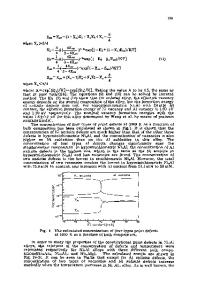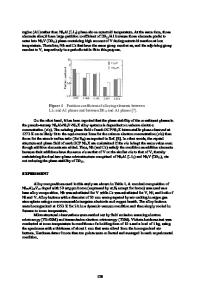Nucleation of an intermetallic at thin-film interfaces: VSi 2 contrasted with Al 3 Ni
- PDF / 731,105 Bytes
- 6 Pages / 576 x 792 pts Page_size
- 1 Downloads / 309 Views
L. A. Clevenger IBM T.J. Watson Research Center, P.O. Box 218, Yorktown Heights, New York 10598
C. V. Thompson Department of Materials Science and Engineering, Massachusetts Institute of Technology, Cambridge, Massachusetts 02139 (Received 22 July 1991; accepted 3 February 1992)
We analyze the formation of VSJ2 at the amorphous-vanadium-silicide/amorphous-Si interface by linear-heating and isothermal calorimetry, and cross-sectional transmission electron microscopy. We show evidence that indicates sporadic VSi2 nucleation with a steady-state nucleation rate after a transient period. The results are contrasted with those obtained for Al3Ni nucleating at the polycrystalline-Al/polycrystalline-Ni interface, where the kinetics appears to be controlled by growth of a fixed number of nuclei at quickly consumed preferred nucleation sites.
I. INTRODUCTION Metallurgical reactions at thin-film interfaces have been under active research due to the widespread applications of layered thin films.1 During low-temperature anneals of thin-film diffusion couples, the interplay of thermodynamic and kinetic factors typically leads to a sequential formation of metastable and equilibrium intermetallics at the interfaces.2'3 Nucleation plays a significant role in these interfacial reactions. It is well known that nucleation is the controlling mechanism in the formation of a number of silicides that form suddenly at rather high temperatures without well-defined growth rates and activation energies.4 It has also been demonstrated that nucleation is generally important in the phase selection process, i.e., which intermetallic phase appears at a particular interface.5'6 The presence of high-energy grain boundaries in the Zr layer has been shown to be essential for the nucleation of an amorphous NiZr phase in a Ni-Zr diffusion couple. 78 Therefore, nucleation kinetics and the effects of microstructures deserve indepth studies. Information regarding how a new phase nucleates during interactions between adjacent layers remains scarce in the literature due to experimental difficulties.4 In our recent work, we have developed the combined use of differential scanning calorimetry (DSC) and cross-sectional transmission electron microscopy (XTEM) to probe the early stages of phase formation during interfacial reactions.9"13 The phase selection sequences in Ni/amorphous Si and V/amorphous Si systems have been investigated.9"11 A detailed calorimetric analysis was performed on the kinetics of Al 3 Ni nucleation and initial growth.12'13 In the V / a - S i system, it has been shown that a thin amorphous vanadium 1350 http://journals.cambridge.org
J. Mater. Res., Vol. 7, No. 6, Jun 1992
Downloaded: 11 Mar 2015
silicide pre-existed at the as-deposited V / a - S i interface. Upon heating, there was only limited thickening of this amorphous layer. VSi 2 subsequently nucleates between two amorphous layers, i.e., at the a-silicide/a-Si interface.1011 In this paper, we present an analysis of the kinetics of nucleation and initial growth of the VSi2 phase.
Data Loading...











